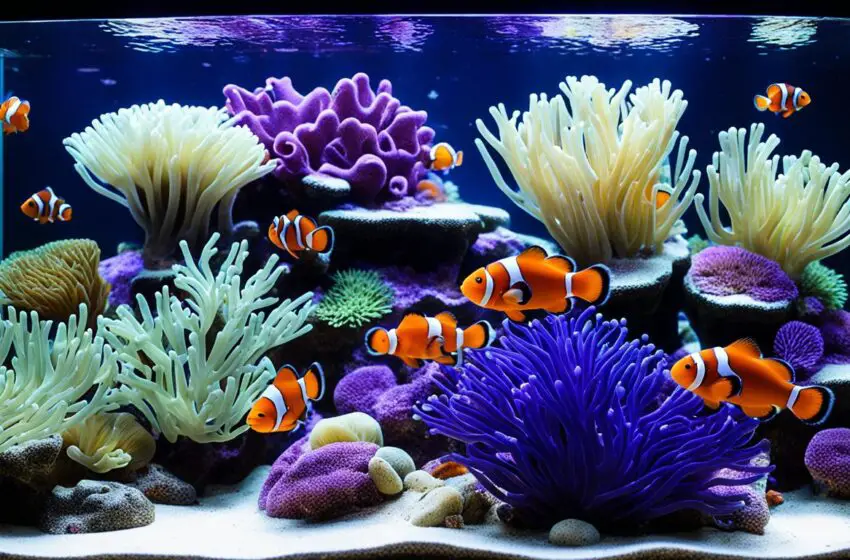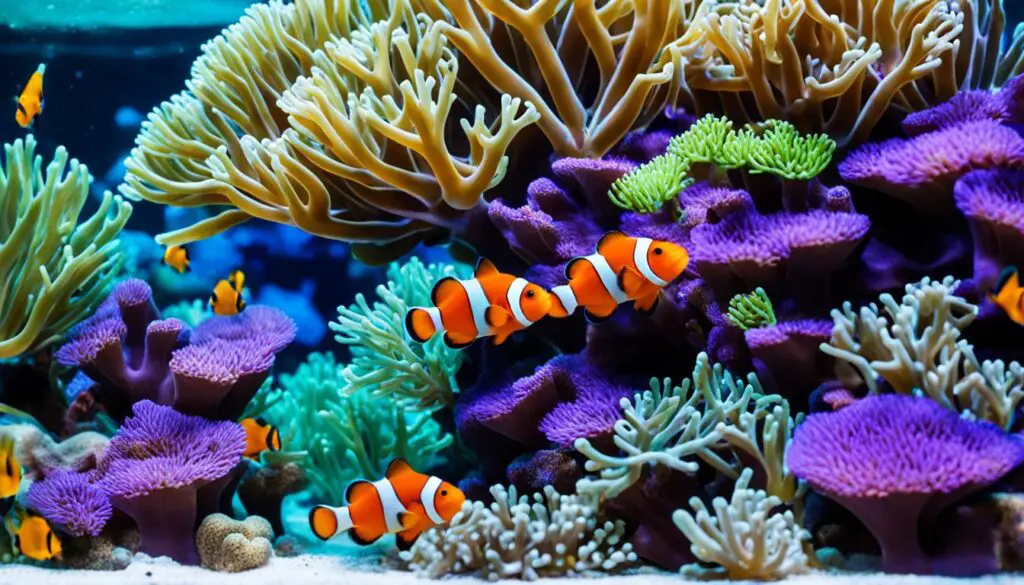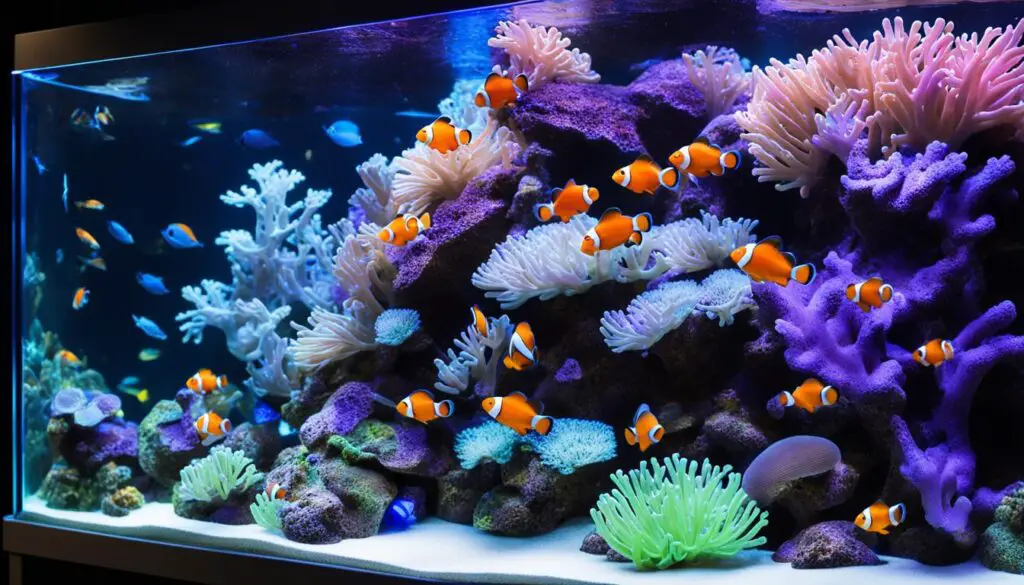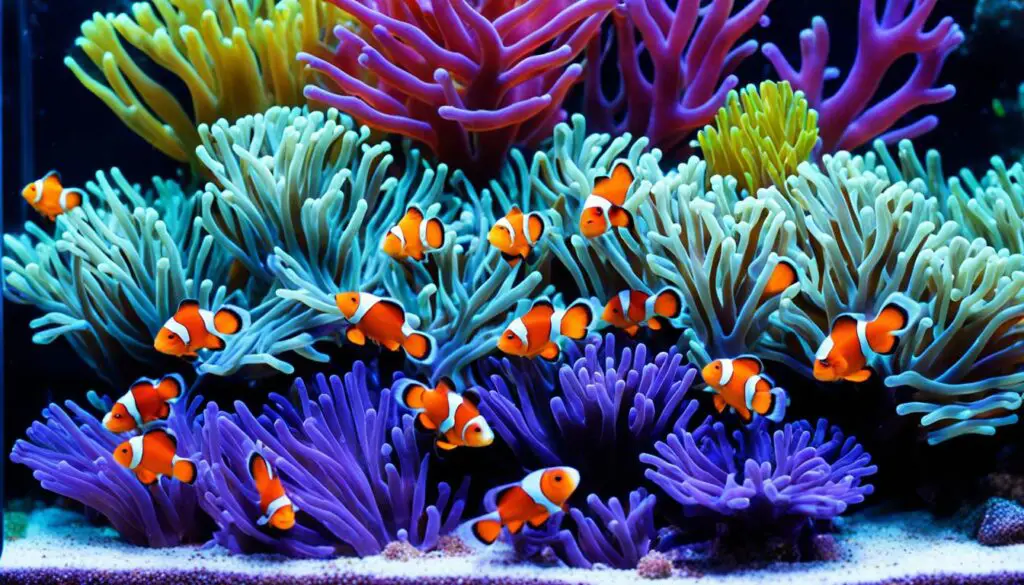Interacting with Clownfish: Building a Bond with Your Fish

Hello, fish fans! Today, I’ll talk about making friends with clownfish. This guide is for both new and experienced fish keepers. We’ll learn the best ways to pair them and make your tank a happy place.
Let’s start with something cool about clownfish. They can change from male to female, and it’s not just by magic. They do this if they’re the only clownfish in the tank. This is why pairing them up is so important.
But, putting two female clownfish together can lead to fights. There are good ways to match clownfish, though. One way is to start with young clownfish. They’ll grow up together and naturally form pairs. Or, you can add a new clownfish to an existing one to create a pair.
Pairing maroon clownfish takes special care. They need to meet slowly over time to get along. This helps prevent fights and increases their chance of being friends.
Watching how the clownfish act is key. If they sleep near each other, share a spot in the tank, or stay together, they’re probably becoming a pair.
Key Takeaways:
- Clownfish are protandrous hermaphrodites, transitioning from male to female.
- Pairing clownfish can be done through techniques like the grow out method or introducing a new fish to an existing one.
- Maroon clownfish require a separation and slow acclimation technique for successful pairing.
- Observing submissive behavior is crucial in establishing a bond between clownfish.
- Signs of a pair bond include shared resting areas, hosting together, and close proximity.
The Mutual Symbiotic Relationship Between Clownfish and Sea Anemone
In the world’s oceans, a special partnership thrives. It involves bright clownfish and the gentle sea anemone. This partnership shows us the beauty and complexity of nature under the sea.
Clownfish and certain sea anemone species have learned to live together. They help each other out in surprising ways. Let’s look deeper into how they benefit from this unique bond.
Clownfish: Ingenious Adaptations for Survival
Clownfish are known for their colors and playfulness. They have clever ways to avoid the sting of sea anemones. A thick mucus layer keeps them safe. This allows them to live peacefully among the corals.
Living in sea anemones isn’t just about safety for clownfish. It’s also for mutual benefit. They provide the anemone with key services. This helps both creatures.
Sea Anemone: A Haven of Life
Sea anemones, beautiful but delicate, benefit greatly from clownfish. They get help cleaning and protection from harmful parasites.
Clownfish keep the anemone’s surface clean, protecting it.
The clownfish’s waste also helps feed the sea anemone. This feeding strengthens the anemone, allowing it to flourish.
Sea anemones offer a safe place in exchange for the help they get from clownfish. They guard them in return in their tentacle protection.
Inspiring Possibilities for the Future
This unique bond between clownfish and sea anemones sparks scientific interest. Scientists are curious about the clownfish’s protective mucus. It might help develop new coatings or tech for people who work underwater.

This partnership between clownfish and sea anemone shows how life in the ocean depends on each other. It’s a vivid example of the important linkages in our natural world.
The Biological Strategies of Clownfish and Sea Anemone
Clownfish and sea anemone work together in a special way. They have developed ways to help each other out. This leads to both of them doing well.
Clownfish and the anemone help each other with food and shelter. Clownfish give the anemone nutrients from their waste. Anemones protect clownfish and give them a home. This helps both animals stay healthy and keeps their home balanced.
In their changing world, clownfish and the anemone change together. They continue to work well with each other. This shows how nature’s creatures can adapt to stay in harmony.
To stay safe from germs, both the clownfish and the anemone have special ways. Clownfish have mucus that stops sickness. The anemone has cells that fight off danger. These methods keep both of them safe and healthy.
FAQ
Is it easy to pair clownfish?
Pairing clownfish can either be a breeze or a challenge. It all depends on your approach.
What type of hermaphrodites are clownfish?
Clownfish change from male to female, known as protandrous hermaphrodites.
What happens if I keep clownfish alone?
Clownfish alone can turn into females.
Can I pair two female clownfish?
Pairing two female clownfish results in conflict.
What are the techniques for pairing clownfish of the same species?
The best ways include letting them grow together and introducing a new one to the group.
Is it more challenging to pair maroon clownfish?
Pairing maroon clownfish is indeed harder. It needs a careful separation and slow introduction method.
Why is submissive behavior important in clownfish pairing?
Showing submission helps clownfish pair up successfully.
What are some signs of a pair bond in clownfish?
Noticing them sleeping in the same spot, hosting together, and sticking close show they’re bonded.
Which species of anemones coexist with clownfish?
Clownfish and specific anemones have a unique, mutually beneficial relationship.
How do clownfish protect themselves from anemone nematocyst strikes?
They avoid anemones’ stings and use a thick mucus layer to stay safe.
What are the benefits for anemones in a relationship with clownfish?
Anemones get cleaned, fed with waste nutrients, and protected from bigger fish thanks to clownfish.
Can the clownfish mucus layer inspire protective coatings?
Their mucus layer might suggest underwater protective coatings for humans.
What does the interaction between clownfish and sea anemone showcase?
This relationship shows various smart biological strategies.
How do clownfish and sea anemone cooperate?
They work together to help and protect each other.
How do clownfish and sea anemone cycle nutrients?
They recycle nutrients by using waste to their advantage.
Do clownfish and sea anemone coevolve?
Yes, they develop together, where changes in one affect the other.
How do clownfish protect themselves from harmful microbes?
Clownfish have developed their ways to combat harmful microbes.
How can studying the relationship between clownfish and sea anemone benefit science?
It can spark new ideas and discoveries in the field of science.



